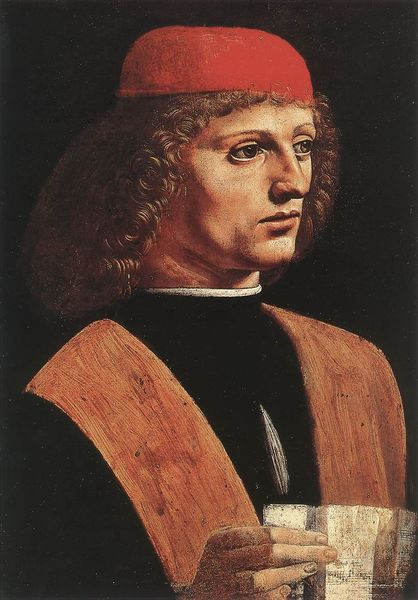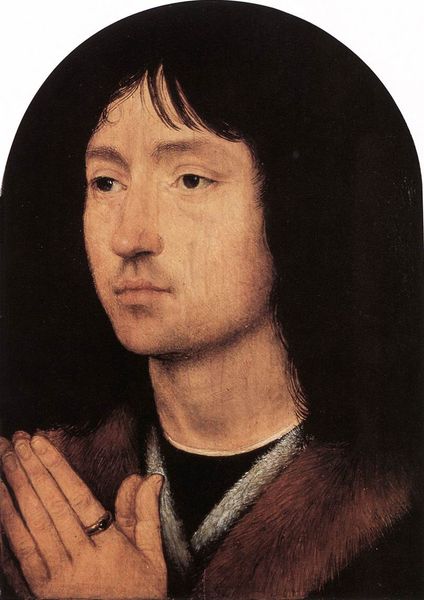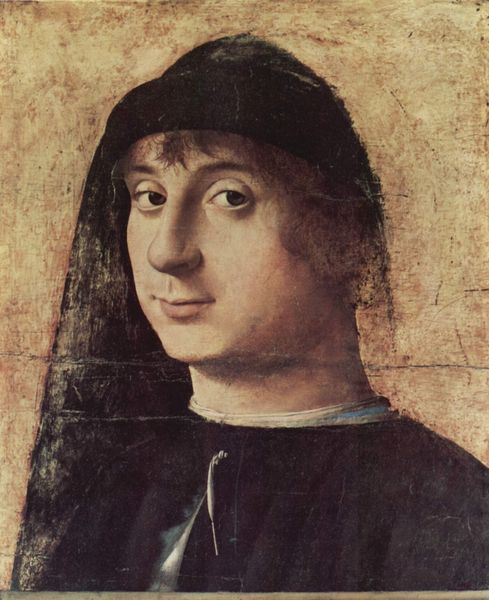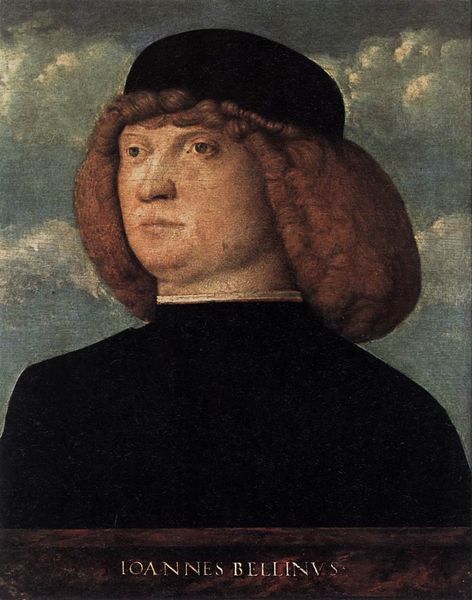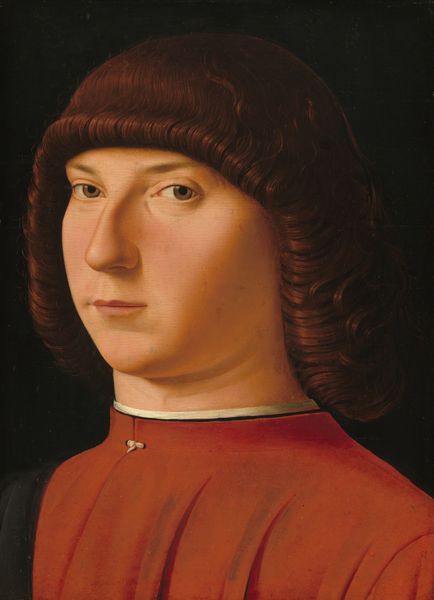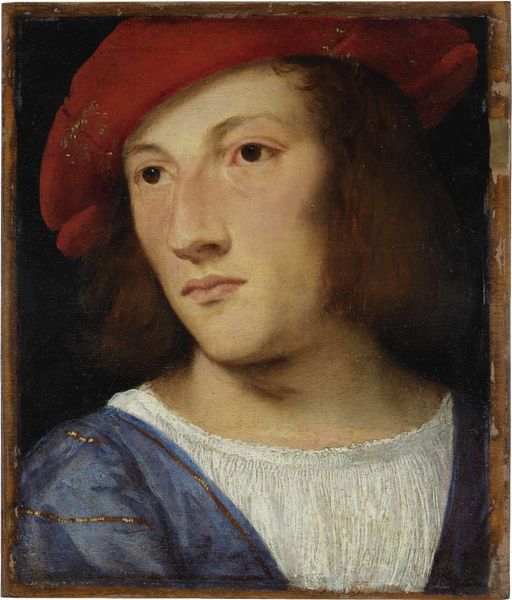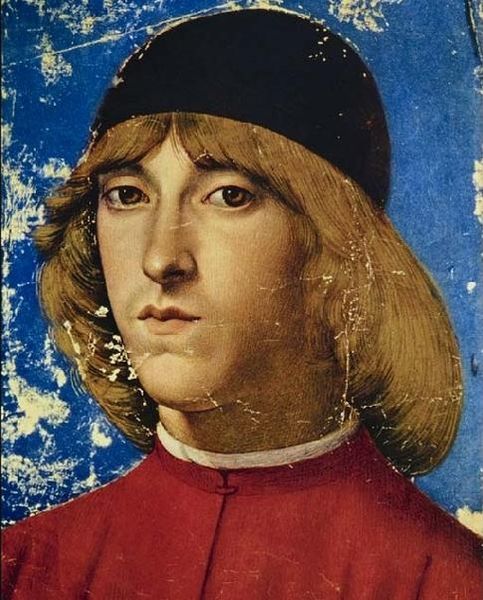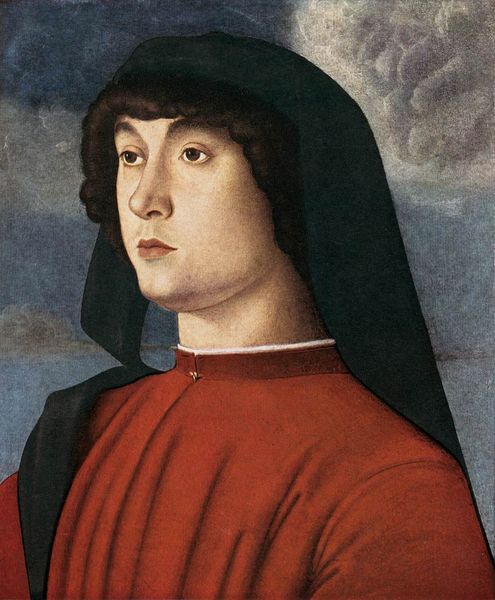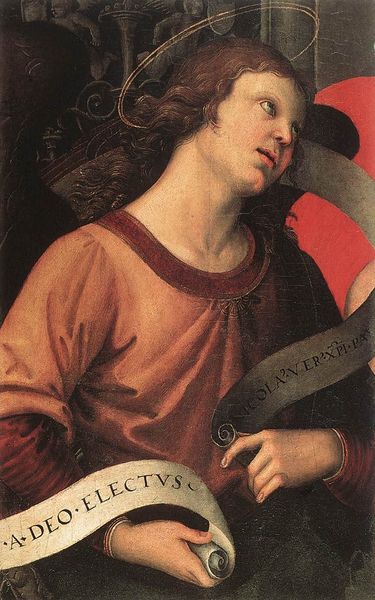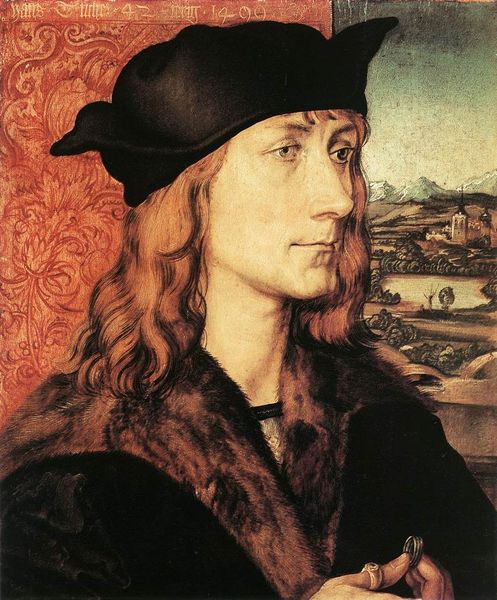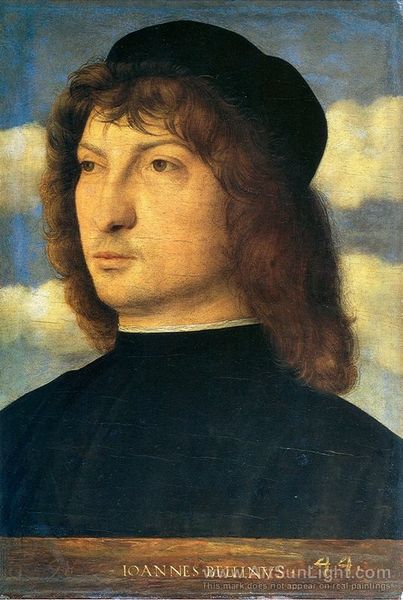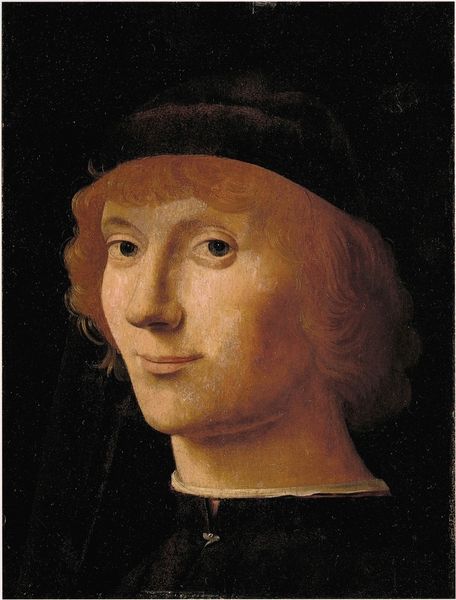
painting, oil-paint
#
portrait
#
painting
#
oil-paint
#
oil painting
#
italian-renaissance
Copyright: Public domain
Curator: Looking at this piece, I'm struck by a sense of quiet, almost melancholy contemplation. There's something very personal radiating from it. Editor: Indeed. What you’re experiencing is captured in Giovanni Antonio Boltraffio’s "Portrait of Gerolamo Casio," painted around 1495, during the Italian Renaissance. This work presents an interesting example of Renaissance portraiture from an historical perspective. Curator: The laurel wreath immediately caught my eye. What does it signify here? Editor: Ah, yes, the laurel wreath. Symbolically, it's deeply tied to achievement, victory, and specifically poetic or intellectual prowess. In Renaissance imagery, to include a laurel crown references both the antique classical world and the ideals of humanism championed at the time, implying Gerolamo Casio was a scholar or poet. Curator: Fascinating. The subject's clothing appears quite bright and voluminous, but it still projects a very constrained formality. Does that contrast suggest a social message to you? Editor: Certainly. During the Renaissance, access to portraiture was growing but not evenly distributed across society. Commissioning a portrait announced something about one's status and cultural aspirations. Even details such as what he is wearing function as signifiers of his world, not to mention the book which references classical education. Curator: And he wears a prominent ring on his finger; clearly marking status and wealth. I find myself thinking about the artist himself. Boltraffio, I believe, was associated with Leonardo da Vinci? Editor: That’s correct. He was part of Leonardo’s workshop, and it shows in the sfumato, the soft blurring of lines and edges that is present in this portrait. It's quite reminiscent of Leonardo’s influence, while the directness of the presentation evokes Venetian portraiture. Curator: The combination really brings out the character's inner world. The overall effect creates a figure not just posing, but thinking and feeling, a technique so indicative of that Renaissance fascination with humanity. Editor: Yes, considering the social currents and artistic traditions evident, "Portrait of Gerolamo Casio" transcends a mere likeness, offering instead a view into the ambitions and ideals of the Renaissance era. Curator: I agree. Looking at it again, the blending of symbolic imagery and humanist style really amplifies this picture, marking it indelibly.
Comments
No comments
Be the first to comment and join the conversation on the ultimate creative platform.
